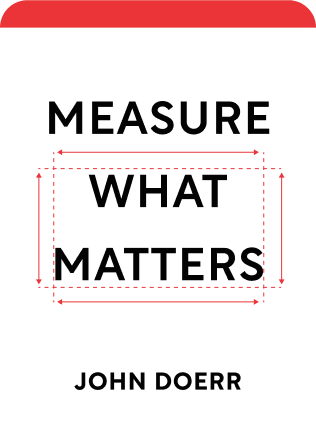

This article is an excerpt from the Shortform summary of "Measure What Matters" by John Doerr. Shortform has the world's best summaries of books you should be reading.
Like this article? Sign up for a free trial here .
What’s an OKR checklist? How can your checklist help you decide on and achieve your goals in business?
An OKR checklist is used to track the OKR process. Once you decide on your objectives and priorities, you can create your OKR checklist to ensure you stick to the process.
See below to find out how to write your OKR checklist.
OKR Checklist: Focus and Commit
Once you’ve focused your priorities, you need to commit to the OKR process. Use this checklist to set up the OKR system and get your entire staff to commit to it.
Start with the Executive Team and Upper Management
First on your OKR checklist is to start with upper management. Use the company’s mission statement and strategic plan to create top-line OKRs. There are three reasons to start at the top, and to start small:
- Executives and managers need to know their own OKRs before their direct reports can align their individual goals with those of the company. Often, organization-level key results will trickle down the hierarchy, becoming the objectives of departments, who will then create their own key results to meet those objectives.
- In the beginning, implementing OKRs won’t be a smooth process. Work out the biggest kinks before you continue the rollout to other tiers. It may take several phases before you implement OKRs company-wide.
- You need to establish buy-in. Employees won’t commit to the process if their bosses don’t publicly model and commit to it. Establish your own commitment first before asking for anyone else’s. To this end, create your own personal OKRs, independent of your team’s OKRs.
Decide on the Length of Your OKR Cycle
While individual objectives may have their own deadlines, your team should be operating according to the same general goal-setting schedule, or OKR cycle. For most companies, there are two OKR cycles, quarterly and annual, running simultaneously. Annual cycles are for long-term OKRs, and quarterly cycles are for short-term OKRs that support the longer-term objectives.
A quarterly OKR cycle is appropriate for businesses in markets that change quickly, such as technology. The short time frame of three months per quarter helps create a sense of urgency and deter procrastination. But the timeframe of your OKR cycle will depend on your particular business and field. Your OKR cycle might be monthly or semi-annually.
Choose a Cloud-Based Management System
In order to effectively track OKRs, you first need a place to store and share them. This is an important part of the OKR checklist. General-purpose software, such as Microsoft Word, can only get you so far. One Fortune 500 company had to completely revise their OKR system after starting with Word: They realized that quarterly goals in Word from all 82,000 employees resulted in 328,000 distinct Word files annually. These files were public, but did anyone have the patience to read them? If nobody knows your OKRs, are they really transparent?
A better system is a cloud-based OKR system, many of which include mobile apps, analytic tools, automatic updating, and integration with other services. (Shortform note: Cloud-based OKR systems include WorkBoard, Ally, Culture Amp, Asana, and many others.)
The benefits of a cloud-based OKR system:
- They make goals visible because it’s easy to find the OKRs of your boss, your colleagues, your direct reports, and people in other departments. The other benefits stem from this all-important one.
- They increase your engagement with your goals because you can clearly see how they align with the goals of the company.
- They allow you to network with your colleagues because, again, your colleagues’ goals are easy to find and see.
- They save you time, money, and energy because you’re not hunting for the relevant Word docs, emails, and notes. Everything you need is in one place, and it’s easily searchable.
Designate an “OKR Shepherd”
In order for the OKR system to work, everyone, from the CEO to the lowest-level employee, has to take part. No one can opt-out. But you’ll likely encounter people who resist the system or procrastinate in setting their OKRs. It’s useful to put someone in charge of keeping the rest of the team or organization accountable for setting and evaluating their OKRs.
Support the OKRs of Your Team and Direct Reports
If you think a departmental OKR is so important that it could use company-wide support, elevate it to a company-wide OKR. If you think a particular key result is at risk of not being achieved on time, elevate it to the level of an objective and give it its own key results to make the path to its achievement clear.
You can always use this OKR checklist as a way to reference your progress, and to create and track your goals.

———End of Preview———
Like what you just read? Read the rest of the world's best summary of John Doerr's "Measure What Matters" at Shortform .
Here's what you'll find in our full Measure What Matters summary :
- How Google uses OKRs to rally 100,000 employees in the right direction
- How to avoid setting useless OKRs, and how to set great ones
- Key subtle behaviors your team must master to make OKRs work






